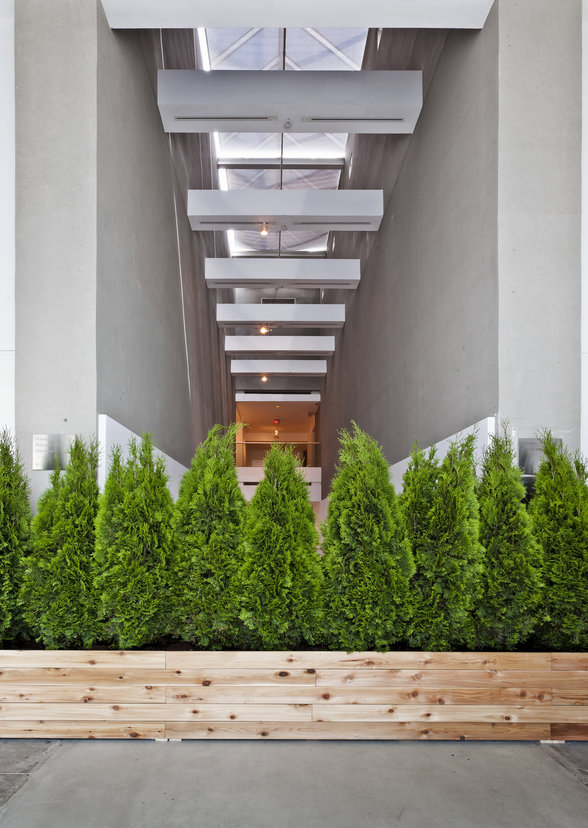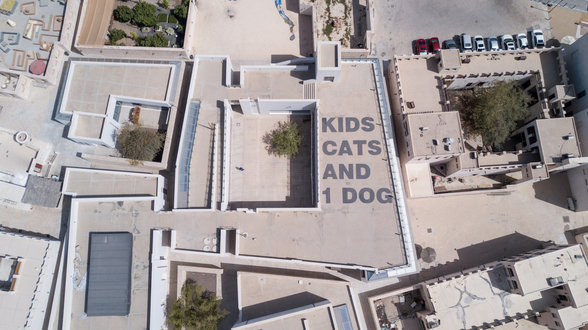Abbas Akhavan and the Anxiety of the Domestic Space
Posted on 25 January 2018 by Liverpool Biennial
Abbas Akhavan, Study for a Curtain, 2015. Image courtesy the artist
Abbas Akhavan is an artist who explores the blurred lines between the inside and the outside that exists within domestic spaces. Finding inspiration from places such as his mum’s living room to the roofs of buildings caught up in Hurricane Katrina, we sought to uncover how this appears in his work as he prepares for Liverpool Biennial 2018.
How would you describe your art practice?
It’s mostly inspired by site. Generally, I rarely ship any artwork but that might change. I usually go and stay somewhere, and I make work that is inspired by or responds to a site.
You were born in Tehran Iran, and now live in Toronto. Has this influenced your practice?
I think it is inevitable, because we are always a product of our environment in some ways – especially as someone who works in situ, or is interested in site and situations. I don’t actually work in Toronto. I live there but I go to places and make work, so in this weird way I don’t live where I was born and I don’t work where I live.
How does going to a different country affect your work?
Recently, I was travelling and I was really curious about how people organise their garbage in front of their doors. That becomes a mode of being inspired by how life creates forms that are not supposed to be artistic but is still particular to that area.

Abbas Akhavan, Untitled Garden, 2008. Installation view at the Power Plant Contemporary Art Gallery. Image courtesy the artist. Photo: Toni Hafkenscheld
Is there anything that has caught your attention in Liverpool?
It was inevitable that I would notice the housing situation. I’m really interested in domestic spaces in my work because they are so close to the garden. Also, I've been hearing about these green spaces, where they tear down houses and then make a kind of erased park. So, of course, those things are of a great interest to me.
There seems to be a shift from interior to exterior domestic spaces within your work – can you elaborate on this?
I think they’re part and parcel – it’s like the balcony, which is that space between the apartment and the garden. It was a very easy transition that has been going on for a while. I don’t think they are very different. Even when I grew up in very small houses, my mum always had a third of the living room designated for plant life. For me, the garden was always both inside and outside, and the house was always inside and outside, even if it was inhospitable.

Abbas Akhavan, Kids, Cats, and 1 Dog, 2017. Installation view at Sharjah Biennial 13, 2017. Image courtesy Sharjah Art Foundation
Can you tell us more about your recent commission for Sharjah Biennial?
Kids, Cats, and 1 Dog is reminiscent of the perfect nuclear family or property designation. At the same time, I think the weather has been such a constant source of anxiety. It went from a literary convention around foreshadowing to becoming a way of perceiving the world – this literary device became how we exist. If there is a storm, everybody talks about global warming and the demise of the planet.
I saw images of the Katrina flood, where people would write on the roof of the building the number of tenants trapped in the attic that needed to be lifted by airplane or helicopter. So I mashed those two models together: the anxiety of the domestic space, but also the idolisation of it. It was a blurring of these boundaries, written on the roof of a house as an SOS call or as a line of poetic messages.
What was your initial reaction to the title of Liverpool Biennial 2018: Beautiful world, where are you?
Initially, I hoped that it is not too nostalgic. I was recently reading that in the 80s and 90s, for instance, terrorism was at a much higher rate than it is today. So there are ways that certain things become politicised by the news. But then I read that it is not 'when are you' but 'where are you', so maybe it is still here, we just have to locate it. So, in that regard, I thought it was nice.
Perhaps it’s more about the future than the past?
Yeah, or maybe it is already amongst us, you know, 'where are you?' not 'when are you?'. So it’s not that it is something we are looking back at, but just something we are looking for in the simultaneous time of now.
When I met Sally and the Biennial team, my feelings were confirmed that it is a hopeful gesture and one thing we have stopped talking about is hope. I feel that we have become consumed by the idea of our own demise. The people who indulge in their own demise are the people who are privileged to even foresee a future where they can contemplate their own demise.
Is there a particular concept or idea that you are looking into for the Biennial?
I have to make something that is mindful of its surroundings. There is a compost of ideas, and then what grows is really contingent on where we dump that pile of research or ideas. The site will govern the project’s future.
Find out more about Akhavan’s work by visiting www.abbasakhavan.com
Abbas Akhavan is one of the participating artists for Liverpool Biennial 2018: Beautiful world, where are you?, running from 14 July – 28 October.
Liverpool Biennial
55 New Bird Street
Liverpool L1 0BW
- T +44 (0)151 709 7444
- info@biennial.com
Liverpool Biennial is funded by
Founding Supporter
James Moores
